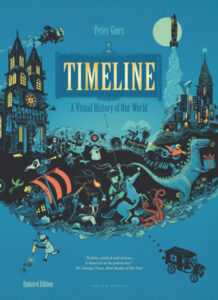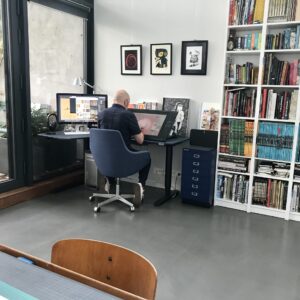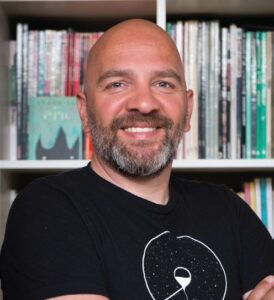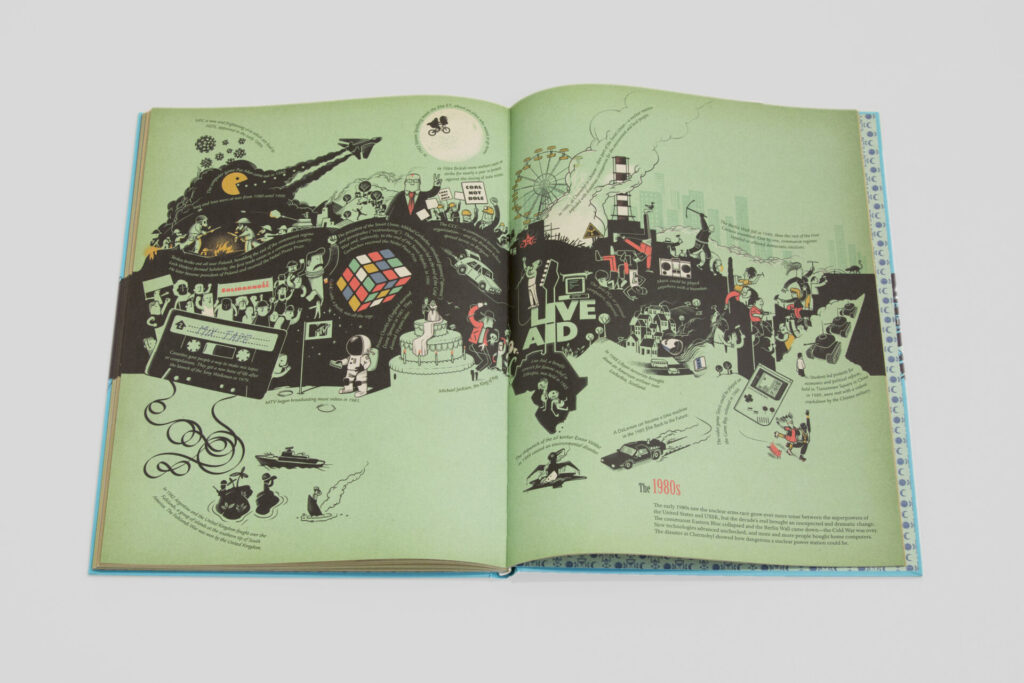 Twenty years ago, Gecko Press published Timeline: A Visual History of Our World. It became one of our bestselling books worldwide, a staple in bookstores like the British Museum in London, and generated followup books including Timeline: Science and Technology.
Twenty years ago, Gecko Press published Timeline: A Visual History of Our World. It became one of our bestselling books worldwide, a staple in bookstores like the British Museum in London, and generated followup books including Timeline: Science and Technology.
From the Big Bang to the present day, illustrated scenes tell the history of our planet in one continuous story.
“As much as you want to pore over each busy historical tableau, identifying mordant little characters and reading brief lines of text, you may want to rush forward to see what comes next. The profusion of places and people and events encompassed here—this is a history of the world, after all—seems to create an urgency of its own.” The Wall Street Journal

This year we publish an updated edition with new material on the 20 years that have passed. Not always a cheering story, with Covid-19, wars and climate crisis, but also signs of hope.
“An inky swath of black bisects this gorgeous oversize volume, its shape transforming to create prehistoric seas, ancient monuments, and more as Goes creates a visual time line of life on Earth, augmented by concise captions and relevant historical detail. Readers will be left with a powerful sense of how far we have come and how far we have to go.” Publishers Weekly, starred review
We asked Peter Goes about the background to the books and his career.
Peter Goes
Peter Goes lives in Belgium, works as a freelance illustrator and picture book maker, and studied animation at the Royal Academy of Fine Arts (KASK) in Ghent. His books Timeline, Timeline Science & Technology, and Rivers are published internationally.
How did you get started in illustration?
I didn’t like school very much as a child. I daydreamed all the time. To focus, I doodled in my notebook while listening to the teacher. The margin was a space to be filled. It always started nice and neat behind the red line but soon the whole page was full.
My parents didn’t “believe” in TV (I think I invented binge watching when I was staying with my grandparents) but there were a lot of books at home. I read a lot of grown-up books when I was little. But those weren’t enough. To feed my easily distracted and wandering brain, I visited the library, where I had access to “normal” children’s literature.
So with a love for doodling and sketching, it was just a small step to start my own little cartoons and stories. I knew I wanted to be a professional in whatever someone‑drawing‑all‑day was: illustrator, comic book artist, film animator… I didn’t have a clue, but I knew the direction. So I went to art school when I was fourteen and my world suddenly got a lot bigger. I learned the technical side of drawing: perspective, shading, the difference between materials and everything from screen printing to woodwork.
I studied animation film at the School of Arts in Ghent. To pay for my studies I worked as a barman and a stagehand. After I graduated I was offered a job as a lighting tech and later became a stage manager and technical director. Full‑time work left me virtually no time for drawing—until a few years ago. A chance meeting, a good chat and a sudden itch in my fingers made me reach for the pencil again. Now not a day goes by without drawing, creating and trying to get better in what I love to do.
Where did the idea for Timeline come from?
I wanted to make an up‑to‑date version of a timeline because at school, timelines helped me a great deal, personally, to understand history. Those simple lines with dates and pictures gave me a better overview and understanding than text. It is a way to create order in a sometimes‑chaotic string of events. It helps you see similarities, influences and coincidences.
How important is history to you?
My grandfather gave me big heavy history books when I was little filled with wonderful stories and adventures. History is very important; we are all a product ofour past either by choice or coincidence.
Has anything in your worldview changed while publishing these three books?
That 1000 years is not that long; it’s about 30 generations. The huge difference in the way we live now compared with the past shows we can’t fathom what life will be 30 generations in the future.
How did you draw the illustrations for the book—what is your process?
 I try to visualize the page in my head, and then I make a rough sketch on paper. I am a digital illustrator, and my number one hardware tool is Wacom Cintiq, which allows me to draw directly on a screen. The computer is the perfect medium for me. I try to be very precise and make a lot of adjustments so I don’t need tons of paper any more. When I work it out on the computer I see that with every stroke it becomes something different from what I first thought it would be.
I try to visualize the page in my head, and then I make a rough sketch on paper. I am a digital illustrator, and my number one hardware tool is Wacom Cintiq, which allows me to draw directly on a screen. The computer is the perfect medium for me. I try to be very precise and make a lot of adjustments so I don’t need tons of paper any more. When I work it out on the computer I see that with every stroke it becomes something different from what I first thought it would be.



